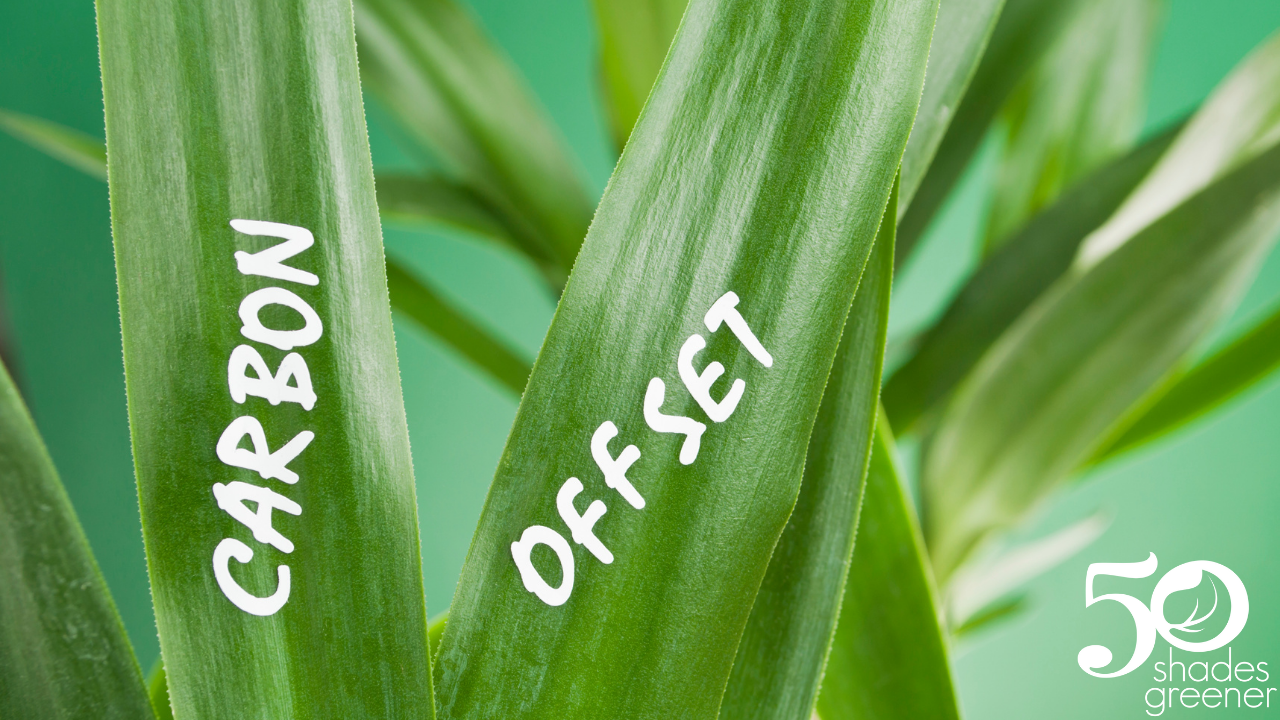Offsetting or Off-putting?

Many of our hospitality clients have asked what the best carbon offsetting projects are in Ireland, particularly as these businesses strive to become carbon neutral. In a previous Opinion Piece, I have highlighted how I find carbon offsetting problematic: Carbon Offsetting - who can I trust? (fiftyshadesgreener.ie).
I do however understand that there is a need for offsetting to exist for businesses who cannot reduce that small remainder of carbon emissions to become neutral or achieve net zero figures by themselves.
The issue that arises for me is understanding the different options for businesses and the language around offsetting. I feel it is not very accessible or transparent. As I delved into some research, I find myself in murky waters and asking many questions – are there any other offsetting projects available in Ireland apart from the popular tree planting?
How are these projects regulated? What credits are the government buying and why are we not able to have more indigenous carbon emission reduction projects?
The first thing I will tackle is the terminology. There are carbon allowances and carbon offsets: carbon allowances provide a certificate or permit to emit one tonne of carbon or equivalent GreenHouse Gas (GHG).
In Ireland companies who receive these carbon allowances are larger emitters such as the aviation or energy-producing industries. These allowances are part of a mandatory national and international carbon market - the Emissions Trading Scheme (ETS).
A carbon offset, which is what we are most concerned with as businesses and individuals, falls outside of this: their value “is generated by a reduction in emissions made by a voluntary project designed specifically for that purpose” (Differences Between Carbon Offsets & Carbon Allowances | NativeEnergy).
Another key piece in this puzzle is the Kyoto Protocol, a part of the Paris Agreement, which holds Ireland accountable for its emission reductions targets. Ireland can buy or “invest” in Carbon Emission Reduction (CER) certificates under the Clean Development Mechanism (CDM) which is ratified by the Kyoto Protocol.
These are certificates which fund offsetting projects in developing countries. They are bought and traded around the world and each certificate allows the holder to emit one tonne of carbon or equivalent GHG (Differences Between Carbon Offsets & Carbon Allowances | NativeEnergy).
An alternative to these CER’s, which is also under the Kyoto protocol, is Joint implementation. This is the same thing but instead of the project being in a developing country – it is “between countries that have commitments to limit or reduce their GHG emissions under the Protocol” (Joint Implementation - Carbon Offset Guide). The tradable certs for this type of offsetting are called: ERU’s – Emission Reduction Units.
In Ireland the EPA – Environmental Protection Agency, is responsible for overseeing the protection of the environment and for distributing environmental licenses, permits and offering guidance on offsetting projects. The EPA did a scoping review to look at creating a Domestic Offsetting scheme in Ireland, see the report in full here: Addressing-Climate-Change-Challenges-in-Ireland.pdf (epa.ie)
When we talk about offsetting projects based in Ireland at present, we are referring to voluntary initiatives which do not offer CER’s VER’s (voluntary emission reduction) ERU’s or REC’s (renewable energy certificates). They are also not contributing to any of these trading schemes internationally or affecting the governments emissions accounting or targets. It does beg the question – why are we so far behind?
There is an amazing group working in our local area “Hometree”. They are planting native trees in an inspiring conservation effort in North Clare. They are transparent in their communication with their volunteers that they are not a carbon offsetting project and that is not their motivation.
I also came across Bank of Ireland’s scheme where companies are now able to fund afforestation in Ireland, it is called the Woodland Nature Credit (rte.ie). This is in conjunction with Coillte and Forestry Partners and it plants native woodlands across the country, "in return, the funders will receive an environmental coupon in the form of carbon sequestration, biodiversity uplift and amenity value” (rte.ie).
I believe that there are many other positive community-based projects of this nature that could be working towards reducing Ireland’s emissions and helping the government meet their targets.
What about Irish marine eco systems, wetlands, biodiversity, renewable energy projects? – it does not just have to be tree planting. International businesses have shown interest in Ireland for carbon sequestration, so it begs the question:
Why can’t we do it for our indigenous businesses and investors?
For instance, Teagasc has confirmed that they have been approached by US companies to get involved in trading carbon credits; “’sequestered carbon is worth real money. Current emissions trading markets put its value at around €50/t,’ commented Teagasc’s Dr. Gary Lanigan”(International businesses contact Teagasc about trading carbon - Agriland.ie)
It has been prevalent in the media for some time now that the government is struggling to meet environmental targets. In 2019 they spent well over €86 million on credits so that they could meet their renewable energy targets (https://www.irishtimes.com/news/politics/buying-carbon-credits-shows-government-s-policies-are-a-charade-1.3925063).
Offsetting has become a buzz word in the race to find answers, but when I investigated the lack of clarity is off-putting. I don’t get how we as a country can be missing our targets, and at the same time be attractive as a carbon credit trading option for other countries?
It just doesn’t add up. We need resource efficiency, we need conservation efforts, we need renewable energy, reduced waste production, we need a functioning circular economy and locally supported enterprises. We need to re-focus our efforts on actions we ourselves can implement rather than sending our money off into carbon markets.
I fear I have not found answers only more questions...


